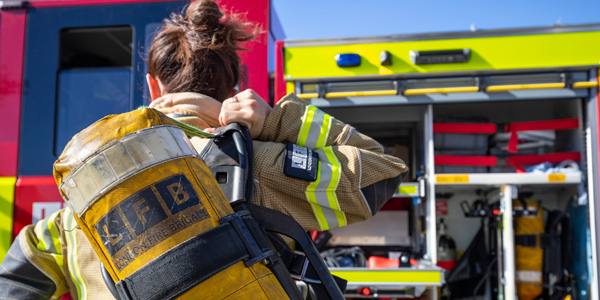Emergencies are unpredictable, and that's why the London Fire Brigade must always be prepared. Our mission is to fight and prevent fires and respond effectively to terror attacks and other major incidents.
The Brigade plans its service to respond to every situation so that the right number of trained firefighters are sent with the right type of equipment to resolve the incident in the most effective way, with the lowest risk to Londoner’s lives, businesses and property.
Providing the right response
Being ready to respond appropriately
We attend a wide range of incidents, including fires, road traffic accidents and other emergencies. When we are called to an incident, our response needs to be the right one. This means having the right arrangements to:
- Receive and deal with emergency calls speedily and accurately
- Send the appropriate number and types of fire engine, with the right number of trained personnel in each crew so they can get to work on arrival
- Get to incidents as quickly as possible
- Get other specialist resources to incidents as quickly as they are needed
- Work quickly and safely to resolve the incident
- Work with blue light partners (Police and Ambulance Service) to make sure that the Brigade provides an integrated and joined-up response

Fire Rescue Units (FRUs)
Fire stations and fire engines
We operate 155 fire engines from 102 fire stations providing an emergency response 24 hours a day, all year round. We also operate one fireboat from our river station, to help deal with emergency incidents on the river Thames
Our staff are internationally recognised for the work they do at a wide range of incidents. This includes responding to fires but may include rescues from collapsed buildings, car and rail crashes or other challenging scenarios.
Fire Rescue Units across London
London Fire Brigade currently has 14 Fire Rescue Units (FRUs) based strategically across London. They are a critical part of its operational response delivery as they provide specialist capabilities to respond to complex and protracted incidents. They are permanently crewed, and the Brigade has no plans to change this.
Fire Rescue Units are split into three types, each providing a unique response capability:
Technical Rescue Fire Rescue Units (FRUs)
There are five of these based across London. They provide our urban search and rescue, rope rescue and water rescue capabilities (they are equipped with a boat). As a result, they are an extremely versatile asset, responding to major building collapses, terrorist related building collapses, rescue from difficult/high structures and rescue from the Thames and other waterways.
Hazmat Fire Rescue Units (FRUs)
There are five of these based across London. They provide a specialist response to hazardous materials incidents, water rescue (they are also equipped with a boat) and animal rescue incidents.
Technical Skills Fire Rescue Units (FRUs)
There are four of these with a specialist rope rescue capability. In particular, they respond to the increasing number of incidents involving urban explorers or people threatening to jump from high structures.
All three types of Fire Rescue Unit also provide a core set of specialist skills, including difficult access, heavy cutting and extended duration breathing apparatus capabilities. The heavy cutting capability is particularly important in supporting some of the road traffic collisions London Fire Brigade attends. The other capabilities help us make an effective response to incidents in the increasingly complex high-rise and subterranean environment.
Did you know...?
Fires, accidents and rescues are just part of our remit
London Fire Brigade does not have a statutory requirement to respond to floods, however it does have statutory duties under the Civil Contingencies Act to ensure that appropriate arrangements are in place to respond to emergencies including:
- Floods
- Chemical, biological, radiological, nuclear (CBRN) explosive incidents
- Urban search and rescue
- Water and high volume pumping
- Command and control if there is a major incident
- Emerging threats